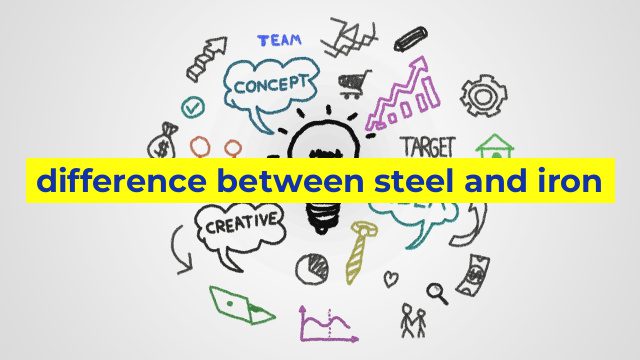Understanding the Distinction between Steel and Iron
Whether you are in the construction industry, a DIY enthusiast or involved in manufacturing, understanding the differences between steel and iron is essential. Both materials are commonly used in various applications but possess unique properties that set them apart. This article will take a closer look at steel and iron and explore the differences between the two.
Composition and Properties
The primary distinction between steel and iron lies in their composition. Iron is a metal that exists in nature and can be extracted from the earth’s crust. It is known for its strength and ductility and can be easily shaped and molded. Steel, on the other hand, is a combination of iron and carbon, usually in varying proportions. The addition of carbon to iron makes it stronger and gives it desirable properties such as hardness, durability, and corrosion resistance.
Strength and Durability
Steel is considerably stronger and durable than iron. The addition of carbon enhances steel’s tensile strength and makes it suitable for use in heavy-duty applications. Steel is also less prone to rust and corrosion than iron, mainly due to its carbon content. Iron, on the other hand, is susceptible to rust when exposed to moisture and oxygen. However, iron’s ductility and malleability make it ideal for specific applications where strength is not the primary concern.
Cost and Availability
Iron is generally less expensive than steel and is widely available. However, its use is limited due to its inherent weaknesses, and it is usually not suitable for high-stress applications. Steel, on the other hand, is costlier than iron but is readily available in different forms and shapes. The addition of other elements to steel, such as manganese and nickel, can further strengthen it and make it more suitable for specific applications.
Applications
Iron is primarily used in applications where weight is not a concern, such as cast iron cookware, engine blocks, and ornamental features. Steel, on the other hand, finds widespread use in industries such as construction, automobile, shipbuilding, and aerospace. Its excellent strength, durability, and corrosion resistance make it ideal for various high-stress applications.
Conclusion
In summary, steel and iron are two distinct metals that possess unique physical and chemical properties. While both materials have their advantages and disadvantages, steel’s superior strength, durability, and resistance to rust make it the preferred choice in most high-stress applications. Iron, on the other hand, is cost-effective and malleable and is generally used in applications where weight and strength are not significant concerns. Understanding the differences between the two materials allows you to make informed decisions and choose the right material for your particular application.
Table difference between steel and iron
| Property | Steel | Iron |
|---|---|---|
| Composition | Contains carbon, manganese, phosphorus, sulfur, and sometimes other elements | Pure iron with less than 0.3% carbon and some impurities |
| Strength | Stronger and harder than iron | Relatively soft and weak when pure |
| Malleability | Can be shaped into various forms and sizes without losing strength | Malleable, but not as much as steel |
| Ductility | Capable of being bent or stretched without breaking | Less ductile than steel |
| Uses | Used in construction, automotive, and manufacturing industries | Used in construction, utensils, and decorative items |

